Museums in Amsterdam: A Cultural Odyssey

Amsterdam, the capital of the Netherlands, is a city steeped in history, art, and culture. One of its most distinctive features is the abundance of world-class museums that dot the cityscape, making it a cultural paradise for both locals and visitors. In this article, we will delve into the world of museums in Amsterdam, highlighting some of the most famous and significant institutions that contribute to the city’s rich artistic and historical tapestry.
Rijksmuseum
The Rijksmuseum in Amsterdam is a cultural gem that stands as a testament to the Netherlands’ rich artistic heritage. This iconic museum, also known as the National Museum, is celebrated for its extensive collection of Dutch Golden Age masterpieces, including works by some of the most renowned artists in the world. In this article, we will explore the Rijksmuseum, its history, significance, and the treasures it houses.
History and Significance
The Rijksmuseum’s history dates back to its establishment in 1800, making it one of the world’s oldest museums. Its primary mission is to collect, preserve, and showcase the artistic and cultural achievements of the Netherlands. The museum’s building, a masterpiece of Dutch architecture, was designed by Pierre Cuypers and opened in 1885. The building itself is a work of art, adorned with intricate Gothic and Renaissance Revival elements.
Dutch Golden Age Collection
The Rijksmuseum is globally renowned for its unparalleled collection of Dutch Golden Age art, with a particular focus on the 17th century, often referred to as the “Golden Century” of Dutch art. Some of the most celebrated paintings from this era can be found in the museum’s galleries.
- Rembrandt van Rijn: The museum is home to an impressive array of Rembrandt’s works, including the iconic “Night Watch.” His portraits, self-portraits, and historical paintings are highlights of the collection.
- Vermeer: Johannes Vermeer’s masterpiece “The Milkmaid” is a highlight, showcasing his mastery of light, color, and detail.
- Frans Hals: The Rijksmuseum features several portraits by Frans Hals, known for his lively and expressive paintings.
- Jan Steen: Jan Steen’s genre paintings, which depict scenes of everyday life, provide insight into Dutch society during the Golden Age.
- Jan van der Heyden: The museum also displays architectural cityscapes by Jan van der Heyden, offering a glimpse into the urban environment of the time.
Decorative Arts and Beyond
While the Dutch Masters take center stage, the Rijksmuseum boasts an extensive collection of decorative arts, historical artifacts, and fine craftsmanship. Visitors can explore furniture, Delftware, silverware, and model ships, providing a broader view of Dutch material culture.
- Asian Art: The museum also houses a notable collection of Asian art, including Chinese porcelain and exquisite Japanese lacquerware, highlighting the Dutch influence on Asian trade during the Golden Age.
- Restoration and Modernization:The Rijksmuseum underwent an extensive renovation that was completed in 2013, allowing for a more engaging and accessible visitor experience. The renovation brought a modern touch to the museum while preserving its historic charm.
- Public Engagement: The Rijksmuseum actively engages with the public through exhibitions, educational programs, and special events. It aims to make the collection accessible and relevant to a diverse audience.
The Rijksmuseum in Amsterdam is a cultural treasure trove that provides a journey through the Golden Age of Dutch art and history. It is a place where the works of legendary painters like Rembrandt and Vermeer come to life, offering an immersive and enriching experience for art lovers and history enthusiasts. The Rijksmuseum is not just a museum; it’s a testament to the enduring legacy of the Dutch Masters and a celebration of the Netherlands’ cultural heritage.
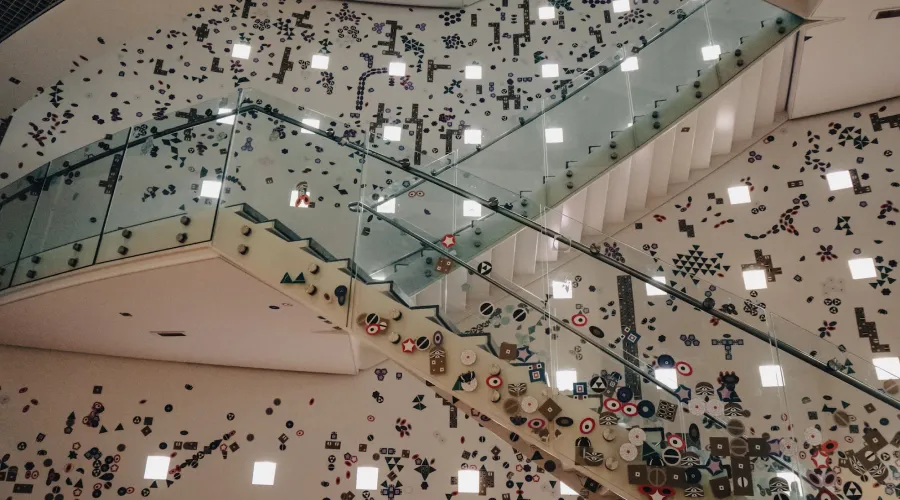
Van Gogh Museum
The Van Gogh Museum in Amsterdam is a shrine to the life and works of one of the world’s most celebrated and tormented artists, Vincent van Gogh. This iconic museum houses the largest collection of Van Gogh’s paintings, drawings, and letters, making it a must-visit destination for art lovers and enthusiasts. In this article, we will delve into the Van Gogh Museum, exploring its history, significance, and the captivating legacy of the brilliant artist.
History and Significance
The Van Gogh Museum was officially opened to the public in 1973, and it quickly became a cultural treasure trove of Vincent van Gogh’s art. The museum’s establishment was driven by a desire to preserve and showcase the vast body of work created by this Dutch post-impressionist artist, who lived a tragically short life. It’s a place that honors his genius, celebrates his unique artistic vision, and tells the story of his tumultuous life.
The Collection
The heart of the Van Gogh Museum is its unparalleled collection of works by the artist himself. The museum holds over 200 paintings, 500 drawings, and 700 letters, providing an in-depth exploration of Van Gogh’s artistic journey and personal struggles. Key highlights of the collection include:
- The Bedroom: One of Van Gogh’s most famous paintings, “The Bedroom,” is a vivid representation of his fascination with color and perspective.
- Sunflowers: The museum is home to several versions of Van Gogh’s iconic “Sunflowers” series, showcasing his mastery of texture and color.
- Self-Portraits: The collection boasts numerous self-portraits, revealing the evolution of Van Gogh’s style and his deep introspection.
- The Potato Eaters: This early masterpiece is a testament to Van Gogh’s dedication to capturing the daily lives of the common people.
- Starry Night Over the Rhône: A mesmerizing nocturnal landscape that demonstrates Van Gogh’s fascination with light and the night sky.
The Life of Vincent van Gogh
The Van Gogh Museum offers a truly immersive experience that goes far beyond the mere appreciation of the artist’s masterpieces. It is a captivating journey into the psyche of Vincent van Gogh, shedding light on the man behind the art. One of the museum’s most profound aspects is the collection of letters written by Vincent to his brother, Theo, which provides an intimate window into his inner world.
In these letters, visitors can trace the artist’s footsteps throughout his tumultuous life, exploring his relentless passion for art, his unyielding determination, and the profound emotional depths that fueled his creativity. It is through these letters that we discover Van Gogh’s unwavering dedication to his craft and his ceaseless pursuit of self-expression, even in the face of personal hardships and mental health struggles. These letters humanize the artist, making him more relatable and allowing us to empathize with his trials and tribulations. The museum’s unique approach transforms a visit into a deeply personal connection with one of history’s most iconic artists, enhancing our understanding of the man and his extraordinary body of work.
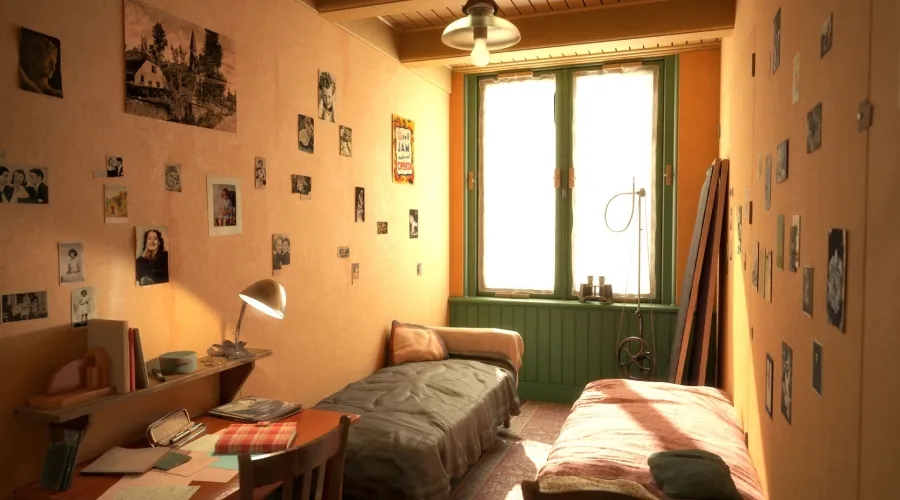
Anne Frank House
The Anne Frank House in Amsterdam is a place of historical significance and poignant remembrance. It is where Anne Frank, a young Jewish girl, and her family hid from the Nazis during World War II and where Anne wrote her world-famous diary. This museum is a testament to the human spirit’s resilience and a somber reminder of the atrocities of the Holocaust. In this article, we will explore the Anne Frank House, its history, significance, and its role in preserving the memory of one of history’s most well-known diarists.
History and Significance
The Anne Frank House is located in the heart of Amsterdam, on the Prinsengracht canal. It is the actual building where Anne Frank, her family, and four others went into hiding to escape the persecution of Jews by the Nazis during World War II. Anne’s diary, “The Diary of a Young Girl,” written while in hiding, is a poignant account of their lives during those dark times. The significance of the Anne Frank House lies in its role as a historical and educational institution. It serves as a poignant reminder of the Holocaust and the impact of intolerance, discrimination, and hatred. The museum’s mission is to keep Anne’s memory alive and to inspire dialogue about human rights, tolerance, and the consequences of discrimination.
The Anne Frank Diary
Anne Frank’s diary is a testament to the power of the written word and the indomitable spirit of its young author. Given to her as a birthday gift, this simple journal transformed into something far more profound, becoming a symbol of hope and resilience during one of the darkest periods in human history. In the secret annex where Anne and her family hid from the horrors of the Holocaust, she found solace in the act of recording her thoughts and emotions. It was within these pages that she not only documented her daily life but also shared her profound observations about the world around her.
In the face of unimaginable despair, Anne’s diary served as a beacon of hope, offering a glimpse into the inner world of a courageous young girl who, despite the dire circumstances, dared to dream and aspire for a better future. Her words resonate with people of all ages and backgrounds, transcending time and place. The diary’s enduring relevance lies in its universal themes of resilience, the longing for freedom, and the desire for a more just world. Its translation into over 70 languages is a testament to the enduring impact of Anne’s story, which continues to inspire and educate, ensuring that the lessons of history are never forgotten. It reminds us of the importance of empathy, tolerance, and the unyielding human spirit in the face of adversity, making Anne Frank’s diary a timeless literary treasure that has touched the hearts of millions worldwide.
The Museum Experience
The Anne Frank House offers a moving and educational experience for visitors. The museum is housed in the secret annex where Anne and her family hid. It includes the concealed entrance, the small living spaces, and the famous bookcase that concealed the entrance to their hiding place. The museum’s exhibits provide context, historical information, and personal stories about those in hiding.
Preserving Memory
The Anne Frank House is a guardian of memory, ensuring that the lessons of the past are never forgotten. It serves as a tribute to Anne Frank’s indomitable spirit, her aspirations, and her dreams for a better world. Her famous quote, “I still believe, in spite of everything, that people are truly good at heart,” continues to inspire hope and empathy. The Anne Frank House in Amsterdam is more than a museum; it is a sacred space where history comes alive, where the diary of a young girl transcends time, and where the voices of the victims of the Holocaust resonate. It is a powerful reminder of the consequences of hatred and intolerance, and a call to action for a more just and compassionate world.
Visiting the Anne Frank House is a moving experience that leaves a lasting impact on all who enter its doors. It encourages us to reflect on the past, confront the challenges of the present, and work towards a future where the lessons of history guide us to a more inclusive and understanding world.

Stedelijk Museum
The Stedelijk Museum Amsterdam, often referred to simply as the Stedelijk, is a prestigious institution that serves as a sanctuary for modern and contemporary art in the heart of the Netherlands. This iconic museum has been a trailblazer in the world of art since its inception, continually pushing boundaries and offering a platform for artists who challenge conventional norms. In this article, we will delve into the Stedelijk Museum, its history, significance, and its ongoing commitment to fostering artistic innovation.
History and Significance
The Stedelijk Museum has a storied history dating back to its founding in 1874. Its mission has always been to collect, preserve, and showcase modern and contemporary art, providing a stage for artists to engage with the ever-evolving world of art. The museum’s groundbreaking architecture, designed by A.W. Weissman and completed in 1895, reflects the institution’s innovative spirit.
The Collection
The Stedelijk Museum boasts an extensive and diverse collection of modern and contemporary art. It covers a wide range of artistic movements and mediums, including painting, sculpture, design, photography, and new media. Some of the museum’s most significant holdings include works by artists such as:
- Piet Mondrian: The Stedelijk is home to an exceptional collection of Piet Mondrian’s iconic geometric abstract paintings, representing the De Stijl movement.
- Kazimir Malevich: The museum features Malevich’s revolutionary Suprematist compositions, which played a pivotal role in the development of abstract art.
- Yves Klein: Yves Klein’s monochromatic blue artworks, part of the Nouveau réalisme movement, are showcased in the museum.
- Cobra Group: The Stedelijk Museum has an extensive collection of works by artists associated with the Cobra movement, characterized by their bold and experimental approach to art.
- Contemporary Artists: The museum also actively acquires works by contemporary artists, ensuring its collection remains dynamic and responsive to evolving art forms.
Temporary Exhibitions
In addition to its permanent collection, the Stedelijk Museum hosts a series of temporary exhibitions that spotlight specific artists, movements, or themes within the realm of modern and contemporary art. These exhibitions serve as platforms for artists to engage with the public and challenge the boundaries of art. The Stedelijk Museum Amsterdam is not just a repository of art; it is a dynamic and ever-evolving platform for modern and contemporary artists to experiment, challenge, and inspire. It plays a pivotal role in shaping the artistic landscape of Amsterdam and the world, consistently pushing the boundaries of artistic expression.
Visiting the Stedelijk Museum is an immersive journey into the ever-changing realm of art and a celebration of human creativity. It reminds us that art is not a static concept but a vibrant and evolving force that continuously reflects and influences our world. The Stedelijk’s commitment to innovation ensures that it remains a beacon for artists and art enthusiasts alike, and a testament to the enduring power of creativity.
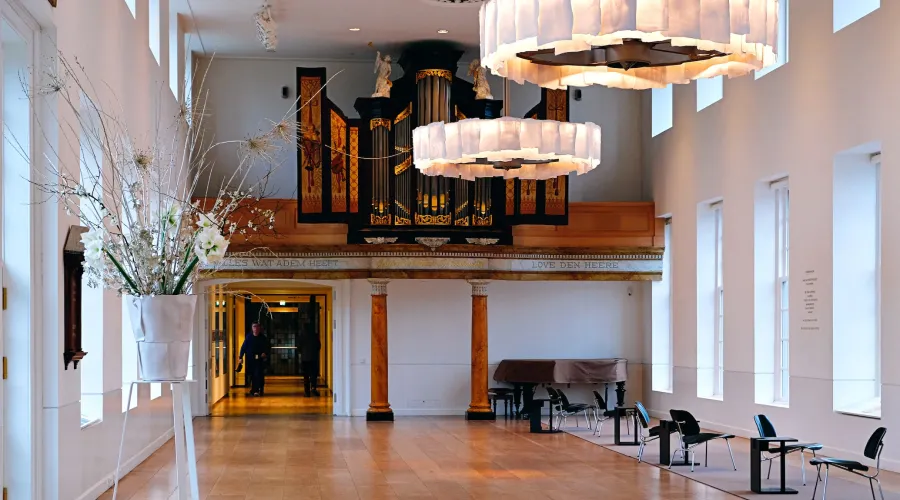
Hermitage Amsterdam
The Hermitage Amsterdam is a cultural gem nestled in the heart of the Netherlands, offering visitors a unique opportunity to immerse themselves in the world of Russian art, history, and culture. Housed in a stately 17th-century building on the banks of the Amstel River, the museum serves as a satellite of the renowned State Hermitage Museum in St. Petersburg, Russia. In this article, we will explore the Hermitage Amsterdam, its history, significance, and the treasures it houses.
History and Significance
The Hermitage Amsterdam was established in 2009 as a result of a collaboration between the City of Amsterdam and the State Hermitage Museum in St. Petersburg. The Dutch branch of this world-famous museum was created to showcase a diverse and rotating selection of art and artifacts from the extensive Hermitage collections in Russia. The historical building in which it resides adds to the charm, providing a fitting backdrop for the exhibitions.
The Collection
The Hermitage Amsterdam offers a broad range of artworks and historical items, allowing visitors to explore various aspects of Russian culture and history. The collection includes:
- Paintings: The museum’s painting collection spans from the Middle Ages to the 20th century, with works by renowned artists such as Rembrandt, Van Ruisdael, and Velázquez, providing insights into European art.
- Russian Art: The Hermitage Amsterdam showcases a rich selection of Russian art, from icons and 19th-century paintings to contemporary works.
- Decorative Arts: Visitors can explore an extensive collection of decorative arts, including porcelain, silver, textiles, and jewelry from the Russian Imperial court.
- Jewelry: The museum displays an exquisite array of jewelry and precious objects from the Russian tsars and aristocracy, highlighting the opulence of the era.
Exhibitions
One of the Hermitage Amsterdam’s unique features is its ever-changing selection of exhibitions. These exhibitions bring the rich heritage of the Hermitage in St. Petersburg to Dutch soil, allowing visitors to experience a diverse array of art and artifacts from different cultures and time periods. The Hermitage Amsterdam is not only a bridge between Russian culture and Dutch audiences but a treasure chest of art and history waiting to be explored. It serves as a testament to the enduring power of art and culture to transcend borders and bring people together. Visiting the Hermitage Amsterdam is an enriching journey that allows visitors to connect with the artistic and historical legacy of Russia. It offers a window into the opulent world of the Russian tsars, the evolution of Russian art, and the interplay of cultures that have shaped the country’s history. The Hermitage Amsterdam stands as a cultural ambassador, fostering a deeper appreciation for art and history while strengthening the bonds between nations.

Museum Het Rembrandthuis
Museum Het Rembrandthuis, located in the heart of Amsterdam, is a historical treasure that provides a unique insight into the life and art of one of the most renowned painters in the world—Rembrandt van Rijn. This museum is housed in the very home where Rembrandt lived and worked during the peak of his career, making it a place of profound historical and artistic significance. In this article, we will delve into Museum Het Rembrandthuis, its history, significance, and the treasures it holds.
History and Significance
The history of Museum Het Rembrandthuis dates back to the 17th century when Rembrandt purchased the house in 1639. He lived in this splendid 17th-century canal house for nearly twenty years, during which time he created many of his masterpieces, including “The Night Watch.” The house eventually went through various owners and purposes until it was restored and transformed into a museum in 1911. Today, Museum Het Rembrandthuis is a place of historical and artistic pilgrimage, where visitors can experience the very environment in which Rembrandt lived and worked. The museum aims to preserve the memory of the artist, provide insight into his artistic process, and offer an intimate view of his daily life.
The Collection
The museum’s collection comprises a rich assortment of Rembrandt’s etchings, as he was a master of this technique. Visitors can admire his etchings, which are displayed chronologically, showcasing his evolution as an artist and his groundbreaking contributions to the art of printmaking. Beyond Rembrandt’s works, the museum houses a collection of 17th-century art and historical objects, creating a broader context for understanding Rembrandt’s era. It offers visitors the opportunity to explore the artistic landscape of the Dutch Golden Age, which deeply influenced Rembrandt’s art.
The House
Museum Het Rembrandthuis allows visitors to explore Rembrandt’s home, which has been meticulously restored to reflect its 17th-century grandeur. The house includes Rembrandt’s studio, living quarters, and a well-preserved art collection from his personal collection. The studio is a particular highlight, as it provides an insight into Rembrandt’s artistic process and the tools he used to create his masterpieces. Visitors can see where he painted, how he managed light, and learn about the techniques he employed to craft his iconic works.
Museum Het Rembrandthuis is a living tribute to the enduring legacy of Rembrandt van Rijn. It provides a rare opportunity to step into the world of one of history’s greatest artists, to see where he lived, worked, and created. The museum’s collection, the meticulous restoration of his home, and its commitment to education make it a treasure trove for art enthusiasts and history lovers. Visiting Museum Het Rembrandthuis is a journey back in time, where the spirit of Rembrandt’s creativity comes to life. It serves as a profound reminder of the genius of one of the art world’s most iconic figures and offers a deeper understanding of the artistic and historical context of the Dutch Golden Age.

Amsterdam Museum
The Amsterdam Museum, located in the heart of the Dutch capital, is a cultural institution that weaves the rich tapestry of Amsterdam’s history and identity. It serves as a gateway to understanding the city’s evolution, from its humble origins as a fishing village to its emergence as a global metropolis. In this article, we will explore the Amsterdam Museum, its history, significance, and the immersive experience it offers to visitors.
History and Significance
The Amsterdam Museum, formerly known as the Amsterdam Historical Museum, was established in 1926. It is housed in a beautiful and historically significant building, which served as an orphanage for much of its history. The museum’s mission is to collect, preserve, and present the city’s history and cultural heritage. The significance of the Amsterdam Museum lies in its role as a cultural repository and storyteller. It chronicles the city’s development, its people, and their stories, offering visitors a profound connection to the past while shedding light on the forces that have shaped the city’s character.
The Collection
The museum’s collection is a reflection of Amsterdam’s vibrant and multifaceted history. It includes a diverse array of artifacts, paintings, interactive exhibits, and multimedia presentations that encompass various aspects of the city’s life. Key elements of the collection include:
- Paintings: The museum features paintings from the Dutch Golden Age, providing insights into the city’s prosperity during that era. Works by artists like Ferdinand Bol and Bartholomeus van der Helst are on display.
- Objects of Daily Life: Visitors can explore a wide range of objects, including furniture, clothing, ceramics, and tools, which illuminate the daily lives of Amsterdam’s inhabitants through the centuries.
- Interactive Exhibits:The Amsterdam Museum employs modern and interactive techniques to engage visitors in the city’s history. These immersive displays bring historical events to life, creating a vivid connection to the past.
- Contemporary Exhibits: The museum also features temporary exhibitions that explore current cultural and societal themes in Amsterdam, ensuring that it remains a dynamic and relevant institution.
The Civic Guards Gallery
One of the highlights within the museum is the Civic Guards Gallery, which houses a remarkable collection of group portraits from the Dutch Golden Age. These portraits, painted by masters like Frans Hals, offer a glimpse into the civic guard companies that played a crucial role in Amsterdam’s history.
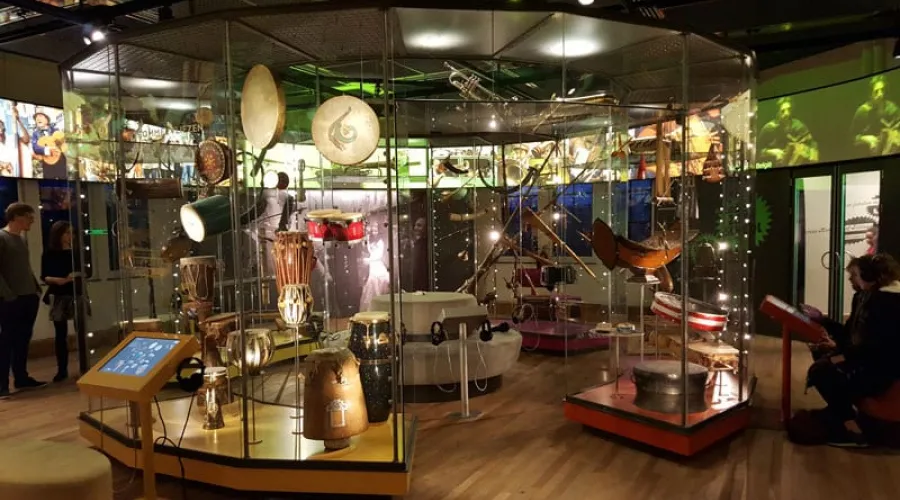
Tropenmuseum
The Tropenmuseum, located in Amsterdam, is a cultural treasure trove that offers visitors an immersive journey through the diverse cultures of the world. This museum, with its extensive and eclectic collection, serves as a bridge between different societies, providing insight into the traditions, rituals, and everyday life of people from across the globe. In this article, we will explore the Tropenmuseum, its history, significance, and the captivating experiences it offers to its guests.
History and Significance
The Tropenmuseum, officially known as the Royal Tropical Institute, was established in 1864 and is one of the most important ethnographic museums in the world. It was initially founded to facilitate research and knowledge exchange between the Netherlands and its former colonies. The museum’s mission has evolved to focus on the cultural and artistic aspects of societies worldwide, making it a hub for exploring world cultures. The significance of the Tropenmuseum lies in its commitment to fostering cross-cultural understanding and promoting awareness of the rich tapestry of human traditions and heritage. The museum provides a platform for dialogue and reflection, celebrating diversity and challenging stereotypes.
The Collection
The Tropenmuseum’s collection is a vibrant mosaic of artifacts, art, photographs, and multimedia presentations that span continents and epochs. It includes:
- Art and Artifacts: The museum features a diverse range of objects, from ceremonial masks and textiles to musical instruments and jewelry. These items offer insight into the aesthetics, craftsmanship, and symbolism of different cultures.
- Photographic Archives:The Tropenmuseum houses a vast collection of historical photographs documenting life and cultures from around the world. These images provide a window into the past and the evolution of societies.
- Textiles and Garments: Visitors can explore the rich textile traditions of various cultures, including clothing and textiles that showcase the artistry and cultural significance of attire.
- Interactive Exhibits: The museum employs interactive exhibits and multimedia presentations to engage visitors in understanding the stories and practices of different cultures.
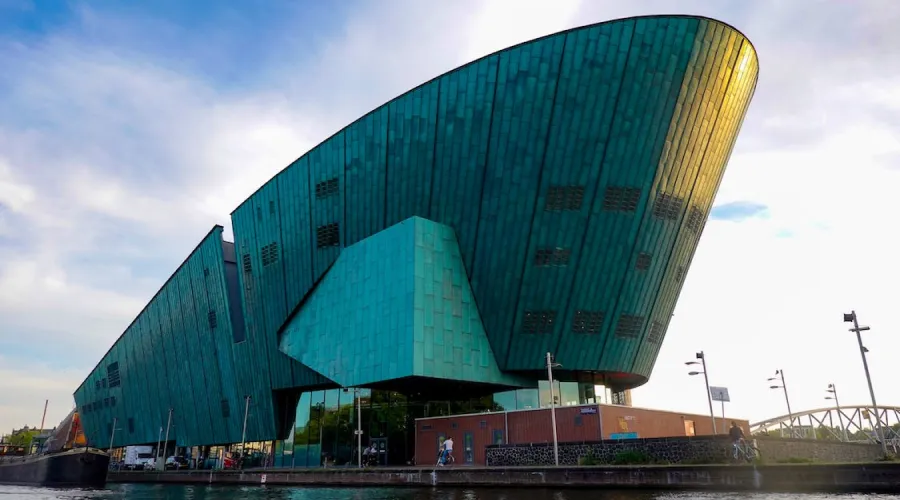
NEMO Science Museum
The NEMO Science Museum in Amsterdam is a haven for inquisitive minds, a place where science comes to life through interactive exhibits and engaging experiences. Located in an iconic ship-like building that overlooks the city, NEMO invites visitors of all ages to embark on a journey of exploration and discovery. In this article, we will delve into the NEMO Science Museum, its history, significance, and the thrilling world of science it unveils.
History and Significance
The NEMO Science Museum, designed by renowned Italian architect Renzo Piano, opened its doors in 1997. Its distinctive ship-shaped structure not only adds to Amsterdam’s architectural charm but symbolizes the voyage of discovery that awaits inside. The museum’s mission is to make science and technology accessible to a broad audience, inspiring curiosity and a love for learning. The significance of NEMO lies in its role as an educational and interactive institution, aiming to demystify science and technology while encouraging critical thinking and creativity. It serves as a catalyst for young minds, nurturing their curiosity and passion for exploration.
The Exhibits
NEMO’s dynamic and interactive exhibits cover a wide range of scientific topics, allowing visitors to engage with various aspects of the natural world and technology. The museum’s offerings include:
- Wonder Lab: A space where visitors can conduct experiments, explore the principles of physics, and engage with hands-on exhibits to satisfy their scientific curiosity.
- Energy Island: An exhibit that invites visitors to learn about sustainable energy sources, the power of wind and water, and the importance of conserving energy.
- Humania: A journey through the human body, where visitors can explore the complexities of the human mind, senses, and anatomy.
- Water World: An underwater adventure that investigates the world of water, featuring interactive exhibits about the sea and its inhabitants.
- Energetica: An exhibit dedicated to the marvels of electricity and technology, where visitors can experiment with circuits, generators, and more.
- Innovation Zone: An area that showcases groundbreaking inventions and the innovative minds behind them, inspiring visitors to think about the future.

Foam Photography Museum
The FOAM Photography Museum Amsterdam, nestled in the heart of the Dutch capital, is a cultural beacon dedicated to the art of photography. With its ever-changing exhibitions and a focus on contemporary visual storytelling, FOAM offers visitors a dynamic and immersive experience in the world of photography. In this article, we will explore the FOAM Photography Museum, its history, significance, and the captivating lens it provides into the world of visual creativity.
History and Significance
The FOAM Photography Museum was established in 2001 and has since gained international acclaim for its commitment to promoting contemporary photography and visual storytelling. Housed in a historic canal-side building, the museum’s mission is to present, inspire, and connect people through the powerful medium of photography. The significance of FOAM lies in its dedication to photography as an art form and a means of visual communication. The museum provides a platform for emerging and established photographers to showcase their work, fostering a deeper understanding of the world through the lens of their cameras.
The Exhibitions
FOAM’s exhibitions are a testament to the rich and diverse world of contemporary photography. The museum presents a variety of thematic exhibitions that explore different aspects of photography, from conceptual to documentary and from abstract to narrative. Some of the museum’s exhibitions are solo showcases of accomplished photographers, while others are group exhibitions that delve into specific themes or visual narratives.
FOAM Talent
One of FOAM’s notable initiatives is the annual “FOAM Talent” program, which seeks to identify and promote the work of exceptional young photographers. This platform provides emerging talents with the opportunity to showcase their projects, gain recognition, and establish themselves in the field of contemporary photography. FOAM publishes a quarterly magazine that delves into the world of photography, featuring articles, interviews, and critical essays that provide insight into the art and craft of photography. FOAM runs an annual open call for emerging photographers, providing a platform for them to submit their work for review by a panel of experts. Selected talents have the opportunity to exhibit their work at the museum, thus gaining exposure and recognition in the global photography community.
The FOAM Photography Museum Amsterdam is a dynamic and immersive platform that celebrates the power of visual storytelling. It serves as a bridge between the world of photography and the public, offering a glimpse into the diverse narratives and perspectives that can be captured through the camera lens. Visiting FOAM is an enriching journey that deepens one’s appreciation for the art of photography and the visual narratives that shape our understanding of the world. It reminds us that photography is a language of its own, capable of communicating emotions, ideas, and stories in a way that transcends words. FOAM is a testament to the enduring appeal and importance of photography as an art form and a means of expression.
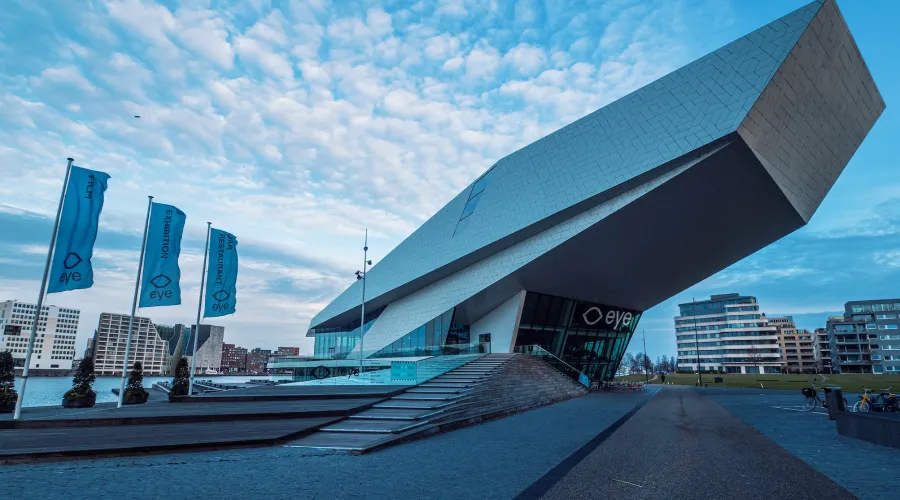
Conclusion
The museums of Amsterdam are a testament to the city’s unwavering dedication to preserving its rich history, nurturing its artistic legacy, and embracing the tapestry of cultural diversity that defines this remarkable metropolis. These institutions, both venerable and contemporary, stand as vibrant guardians of the past, present, and future. Each museum provides a comprehensive and immersive experience that caters to a diverse range of interests and tastes. Whether you are drawn to the exquisite works of the Dutch Masters, the cutting-edge expressions of modern art, the captivating stories of history, or the wonders of science, Amsterdam’s museums extend an open invitation to explore, discover, and immerse yourself in their world. As you wander through the city’s museums, you will not only unearth the layers of Amsterdam’s history and artistic brilliance but also connect with the diverse voices and narratives that weave the vibrant fabric of this city. The museums of Amsterdam are a treasure trove of cultural exploration, where you can delve into the past, savor the present, and envision the future.









